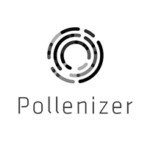Eric Ries (@ericries) came by the Hive last Wednesday for a clinic on our startups. We’ve been a living the lean startup approach for a few years now and it is definitely something we can never be ‘good enough’ at. This time with Eric, it was extremely helpful to throw our real experiences against the practice.
We asked the team to write some notes on what they learned.
Phil
We need to get our businesses to a point of sustainable growth faster. How do we obsess about that in a practical way?
What are sustainable growth metrics? Viral co-efficient, etc.
We need to bring back feature flipping to our projects so that we can conditionally release new features to production to some users only.
We need to add a “Validated” swim lane to our Kanban boards. Make sure we are measuring and working on customer value not technical implementations.
“The product IS the customer experience.”
Tony
We should spend ‘too much’ time with our earliest customers – concierge time.
Our customers will decide when our products are right, not us. Arrogant to try and decide for them.
Robert
We should be more aggressive with manual testing in early stages. We need to be hitting the streets, not the keyboard.
Eric is in denial about the fact that he actually wrote a book about scrum 🙂
We should charge money first and ask questions later. Never offer the product for free with a view to charging at a later date.
How much time should we spend testing? 100%. Everything we do is a test. The user story is the hypothesis and the test is only proven once the hypothesis is validated.
The lean process is scientific. However, this is not scientific in the high school science class sense where the student typically works towards a foregone conclusion and success is defined as reaching this conclusion. If the conclusion is not reached, the assumption is that the method is flawed. This is not science and is not the science the lean process subscribes to. The scientific method is a creative one.
Salty
We should use test results to drive the products direction. Don’t make assumptions and make product decisions/pivots based on results.
Michael
We should constantly be making tests, not features. A feature is a means to an end to validate a test.
The product is the entire customer experience, not just the code/ui etc. So our idea of putting pressure on an MVP doesn’t apply. The product is continually worked on (through tests) from day one.
Pivot = Change in strategy. Product changes = optimisation. If optimisation works (makes customers happier) the strategy is working. Pivot when optimisation fails enough.
Don’t build anything until you’re too busy to serve another customer. Automate what takes the most time, not what is the most complicated (or cool).
Sustainable growth is really important. We need to work through the engines and apply to businesses.
Viral is involuntary.
Use real metrics.
Observe customer behaviour, not direct answers to questions.
Once a week we should take a step back and question our businesses the same way Eric did to the co-founders. We need to get good at answering those questions and making sure we’re focusing on the right stuff. To answer the questions we need to be looking at our numbers daily.
Andy
Stop guessing, we are making too many assumptions and not really validating them.
We should be releasing a LOT more (not ‘features’ but tests).
CBL
Provide USEFUL information. We seem to be married to numbers that don’t provide any insight. We need to move away from vanity metrics.
Dan
The first thing you need to do is identify your growth engine. Only build a website once you have that. Concentrate only on that. Definately go out and push your product. Hit the streets and find out what the customers want. There is no use in doing any web marketing until you have customers and are making learnings from them.
Customers use a service for only one purpose. Find out what is the one thing you can provide to the customer that they will pay for, forget the rest.
